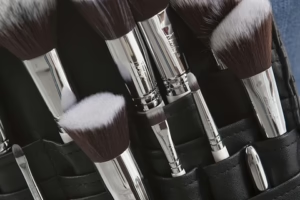Bold and Beautiful: Embracing Color in Your Makeup Looks
In a world that often encourages subtlety and minimalism, a vibrant movement is sweeping through the beauty industry—it’s all about embracing bold colors in makeup. Gone are the days when neutral palettes reigned supreme; today, it’s about allowing your personality to shine through a stunning spectrum of hues. Whether you’re a makeup novice or a seasoned pro, experimenting with color can add an exciting twist to your beauty routine. This article explores the art of using bold colors in makeup, offering tips, color combinations, and inspiration for every occasion.
The Power of Color in Makeup
Colors uniquely influence not only our appearance but also our mood and confidence. A bold lipstick can empower you to conquer the day, while a fun eyeshadow look can evoke feelings of joy and creativity. Embracing color allows you to express your individuality and celebrate your unique features. The makeup world has become increasingly inclusive, encouraging everyone to explore and enjoy a rainbow of shades.
Starting with the Basics: Choose Your Palette
While stepping into the world of bold colors can be intimidating, the key is to start with a palette that resonates with you. Begin by selecting two or three colors that reflect your personal style. For those new to colorful makeup, consider shades of pinks, warm oranges, and vibrant purples, which universally complement a wide range of skin tones.
Color Palette Suggestions:
- Bright and Playful: Hot pink, electric blue, and sunny yellow.
- Warm and Earthy: Rich terracotta, deep green, and burnt sienna.
- Cool and Edgy: Deep plum, teal, and metallic silver.
Application Tips for a Flawless Finish
-
Start Small: If you’re unsure about bold colors, start with a single feature. Try a bright eyeliner or a pop of color on your lips before diving into a full face of extravagant hues.
-
Layering: Build color gradually. Layering your products allows for more control and the ability to intensify the color without it being overwhelming.
-
Blending is Key: When working with bold eyeshadows, blending is crucial. Use a fluffy brush to seamlessly transition between colors, creating a more cohesive and polished look.
-
Balance Boldness: When going for a statement eye, consider softening the lips or opting for a nude shade to balance the overall look—and vice versa.
- Use Quality Products: Invest in high-quality products that offer good pigmentation, allowing the colors to pop without needing to layer excessively.
Color Combinations to Try
- Pastel Dreams: Pair soft pastel shades like lavender and baby blue for a dreamy, ethereal look.
- Fierce Contrasts: Combine complementary shades, such as orange and blue or pink and green, to create a striking appearance.
- Monochromatic Magic: Use varying shades of one color family, such as different tones of pink, to create depth and intrigue.
Bold Looks for Every Occasion
-
Casual Day Out: Go for a light wash of colored eyeliner—perhaps neon green or cobalt blue—paired with a nude lip.
-
Night Out: Amp it up with a smoky eye using a bold purple or emerald, and finish with a statement lip in a matching shade.
-
Special Events: Don’t shy away from glitter or metallics! A golden eyelid contrasted with a bold berry lip can turn heads.
- Everyday Glam: Incorporate subtle pops of color, such as a colorful mascara or a bright inner corner highlight, to elevate your daily look without overwhelming your features.
Embrace Your Personal Style
Ultimately, makeup is a form of self-expression, and there are no hard and fast rules. Experiment with colors, textures, and techniques until you find what makes you feel bold and beautiful. Use social media platforms like Instagram and TikTok for inspiration, and don’t hesitate to share your own vibrant creations with the world.
The future of makeup is bright, and the colors you choose to wear can tell the story of who you are. So, go ahead—let your personality shine through a kaleidoscope of colors and embrace the bold beauty that comes with it! Whether it’s for daily wear or a special occasion, remember that every swipe of color is a chance to showcase the bold, beautiful you.
For more insights and trends in the colorful world of makeup, be sure to visit [modern_footnote_source_link].


























Add Comment